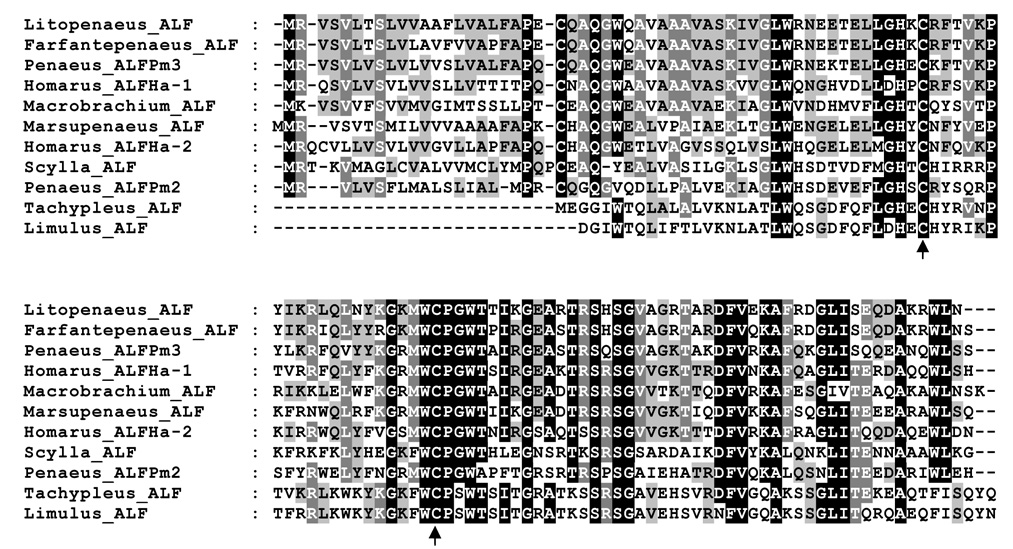Figure 5.
Alignment of representative arthropod anti-lipopolysaccharide protein sequences, selected from chelicerate and decapod crustacean examples. Intensity of color reflects percentage identity calculated via MEGA4 (Tamura et al. 2007) and displayed via GeneDoc (Nicholas et al. 1997). ALFs presented include those from Pacific white shrimp Litopenaeus vannamei (DQ208703), pink shrimp Farfantepenaeus paulensis (EF601051), giant tiger prawn Penaeus monodon (ALFPm2 EF523561, ALFPm3 EF523559), American lobster Homarus americanus (ALFHa-1 EU625516, ALFHa-2 EU625517, this study), freshwater shrimp Macrobrachium olfersii (EU289220), kuruma prawn Marsupenaeus japonicus (AB210110), mud crab Scylla paramamosain (EF207786), and mature ALF peptides in the chelicerates Japanese horseshoe crab Tachypleus tridentatus (AF227150) and Atlantic horseshoe crab Limulus polyphemus (P07086). Arrows indicate conserved cysteine residues participating in a disulfide bridge that forms a cationic loop in the protein.

